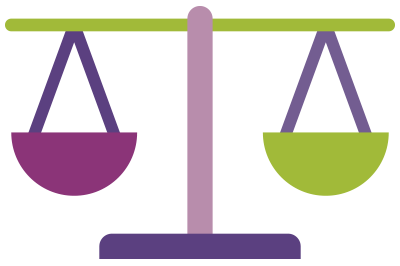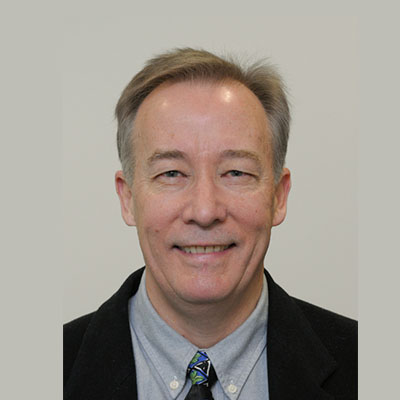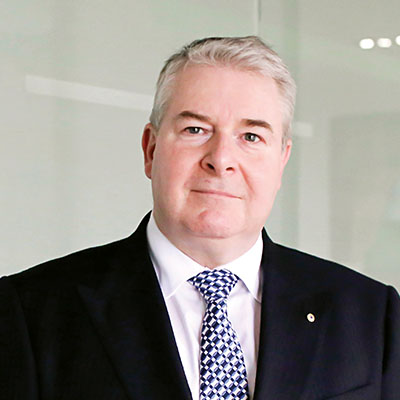Medical Radiation Practice Board of Australia
2015/16 Annual Report Summary
At a glance: Regulating medical radiation practitioners in 2015/16
This annual report summary provides a snapshot of our work regulating more than 15,000 registered medical radiation practitioners in the financial year to 30 June 2016.
A more detailed profile, encompassing data relating to all 14 National Boards in Australia, is published in AHPRA and the National Boards’ 2015/16 annual report
657,621 health practitioners in 14 professions registered in Australia in 2015/16
15,303 were registered as medical radiation practitioners
This is 2.3% of the registrant base

Registration grew by 2.9% from 2014/15

68% women
32% men

3,447 registered students; down 15.7%1

1,722 new applications for registration received

1,728 criminal history checks were carried out for medical radiation practitioners, resulting in:
61 disclosable court outcomes;
No regulatory action needed to be taken.
36 notifications (complaints or concerns)2 were lodged with AHPRA about practitioners

27 notifications were closed3

8 complaints were made about possible statutory offences relating to medical radiation services
7 statutory offence matters were closed
Note:
- Compared with 2014/15.
- This figure refers only to matters managed by AHPRA. For total notifications received about the profession, including matters managed by the Health Professional Councils Authority in NSW, please refer to Table 5.
- This figure represents complaints managed and closed by AHPRA and excludes matters managed by the HPCA.
About this report
This report provides a profession-specific view of the Medical Radiation Practice Board of Australia’s work to manage risk to the public and regulate the profession in the public interest in 2015/16.
The Board has worked in close partnership with the Australian Health Practitioner Regulation Agency (AHPRA) to provide all Australians with a safe, qualified and competent workforce under the National Registration and Accreditation Scheme (the National Scheme).
Information included in this report is drawn from the data published in the 2015/16 annual report by AHPRA and the National Boards, and was correct as at 30 June 2016.
Whenever possible, historical data are provided to show trends over time, as well as comparisons between states and territories.
For a wider context, and to compare the profession against national data from all 14 professions regulated by National Boards under the National Scheme, this report should be read in conjunction with the 2015/16 annual report. You can download the report.
Message from the Chair, Medical Radiation Practice Board of Australia
This report outlines the work of the Medical Radiation Practice Board of Australia in 2015/16, with data about decisions and outcomes relating to the registration and regulation of medical radiation practitioners.
The Board makes decisions on applications for registration, including from overseas-trained practitioners, as well as developing national standards, codes and guidelines for medical radiation practitioners.
We also approve accreditation standards, accredit courses of study and fund accreditation activities required under the National Law. These activities are carried out by the Accreditation Committee established by the Board. We would like to thank the Accreditation Committee for its tireless work throughout the year to ensure that practitioners have the knowledge, skills and professional attributes necessary to practise the profession in Australia.
The Board also appreciates the dedicated support provided by AHPRA staff in the national and state and territory offices. It is when a registered health practitioner does not meet the accepted standards that regulation matters most. At these times, the Board and AHPRA work together to assess and, if necessary, do what needs to be done to manage risk and keep patients safe.

Mr Neil Hicks
Chair, Medical Radiation Practice Board of
Australia
Members of the National Board in 2015/16
- Mr Neil Hicks (Chair)
- Ms Mary Edwards
- Ms Belinda Evans (until 31 December 2015)
- Ms Marcia Fleet
- Mr Christopher Hicks
- Ms Robyn Hopcroft
- Mr Mark Marcenko
- Professor Stephan Millett
- Mr Travis Pearson
- Ms Tracy Vitucci
- Mr Roger Weckert
- Ms Rosemary Yeo (until 29 July 2015)
During 2015/16, the Board was supported by Executive Officer Adam Reinhard.
More information about the work of the Board, including codes, guidelines and information on registration standards, can be found on the Board website.
Message from the Agency Management Committee Chair and the AHPRA CEO
Since the National Scheme began six years ago, AHPRA has worked in partnership with the National Boards to ensure that the community has access to a safe and competent health workforce across 14 registered health professions Australia-wide.
We rely on the expertise and insights of the National Boards to make decisions about the 657,621 health practitioners currently registered in Australia in the interests of the Australian public. It’s a role that Board members commit to with dedication and passion, and the community can be assured that its safety is always their number-one priority.
As at 30 June 2016, there were 15,303 registered medical radiation practitioners, who represent just over 2% of the total registered health workforce.
Overseeing the registration and regulation of the profession is the Medical Radiation Board of Australia, with valuable input from professional and community groups. Together, they ensure that practitioners are kept up to date with their responsibilities under the Health Practitioner Regulation National Law (the National Law), as in force in each state and territory.
The Board upholds the values of the National Scheme by taking a risk-based approach to regulatory decision-making and policy implementation, with a continued focus on finding ways to improve effectiveness, efficiencies and timeliness.
Cross-profession collaboration played a major role for the Board this year, as it consulted with the 13 other Boards in the National Scheme and their New Zealand counterpart, the Medical Radiation Technologists Board, to identify best practice for processes around the management of complaints.
We’d like to thank the Board members, and members of its independent accreditation committee, for their continued commitment to ensuring a competent and flexible health workforce that meets the current and future health needs of the community.
We look forward to continuing to work in partnership with the Board.

Mr Martin Fletcher,
Chief Executive Officer

Mr Michael Gorton AM,
Chair, Agency Management Committee
Year in review: Medical Radiation Practice Board of Australia
In 2015/16, the Board worked to lower registrant fees, released new registration standards and collaborated with other National Boards to increase efficiencies around the complaints process.
In September 2015, the Board announced it would reduce registration renewal fees to $180. This fee is lower than the average registration fees that existed prior to national registration. The Board has planned for a deficit budget over the next three to five years, with the aim of returning equity back to registered practitioners.
Our continued focus is on both time and cost efficiency. Beginning in June 2016, we reduced the number of face-to-face Board meetings to six per year. This is expected to reduce Board-managed costs by approximately 30%.
The Board has agreed to be part of a crossprofessional committee on immediate-action matters and is waiting for the efficiency and financial dividends that are intended to flow from the model to be developed by AHPRA.
New registration standards for continuing professional development and professional indemnity insurance arrangements began in 2015/16. These standards were developed collaboratively with other National Boards and recognise the benefits of consistent arrangements across health professions.
In February 2016, the Board used its examination for the first time to assist in risk-based regulatory decision-making. The exam can be used in a number of scenarios, but always with the intent of enabling practitioners to demonstrate that they are competent and safe to practise. The Board has also been working collaboratively with the equivalent New Zealand Board (the Medical Radiation Technologists Board) to facilitate greater alignment with the requirements for registration for medical radiation practitioners in both countries.
Data snapshot: Regulation at work in 2015/16
The profession in brief
- The medical radiation practitioner registrant base grew by 2.9% year on year, to 15,303 in 2015/16.
- New South Wales (NSW) was the principal place of practice for most of these practitioners (5,089); the Northern Territory (NT) was home to the least (112).
- The age bracket with the most practitioners was 25–29 (3,053 registrants).
- 1,441 practitioners were under 25 years of age; 17 were aged 75 or over.
- Women comprised 68% of the profession.
About our data
Data in this Board summary are drawn from the 2015/16 annual report, published by AHPRA and the National Boards. Data relating to medical radiation practitioners have been extracted from national source data that include all 14 health professions regulated under the National Law.
In the following pages, you’ll find registration data, including registrant numbers by age and principal place of practice, as well as data about notifications (complaints or concerns) received about medical radiation practitioners in the financial year to 30 June 2016. Data about statutory offence complaints are also included.
For more data from the 2015/16 annual report by AHPRA and the National Boards, including data on other professions and summary reports by state and territory, go to the annual report website.
Notifications data
Notifications are complaints or concerns that are lodged with AHPRA about registered health practitioners or students practising in Australia.
Our data generally excludes complaints handled by co-regulatory jurisdictions, such as in:
- NSW, where complaints about health practitioners with this state as their principal place of practice (PPP) are not managed by the Board and AHPRA, unless the conduct occurred outside NSW. Complaints about health practitioners where the conduct occurred in NSW are handled by the Health Professional Councils Authority (HPCA) and the NSW Health Care Complaints Commission (HCCC), and
- Queensland, where complaints are received and managed by the Office of the Health Ombudsman (OHO) and may be referred to AHPRA and the relevant National Board. We are not able to report on all complaints about health practitioners in Queensland because we only have access to data relating to matters referred to us by OHO.
Note that some NSW regulatory data published in this report may vary from data published in the HPCA’s annual report. This is due to subsequent data review by the HPCA after submission of initial data to AHPRA. For more information on how complaints about health practitioners are managed in NSW, and for data about complaints made in the state, please refer to the HPCA website.
For data relating to complaints in Queensland that have not been referred to AHPRA, please refer to the OHO website.
Registration of medical radiation practitioners
The number of medical radiation practitioners registered across Australia was 15,303 as at 30 June 2016, which is 2.9% higher than last year.
Medical radiation practitioners made up 2.3% of all registered health practitioners across the National Scheme. Noting that there are a range of medical radiation practice categories within this profession:
- 95% of the registrant base held general registration to practise, with this cohort of registrants increasing by 4% from the previous year
- 3.4% held provisional registration and are participating in a supervised practice internship while they progress towards being eligible for general registration. This registrant category decreased by 17.5% compared with last year
- less than 0.1% held limited registration, which allows internationally qualified medical radiation practitioners to provide medical radiation services under supervision, and
- 1.5% held non-practising registration and could not practise; a decrease of 5.7% from last year.
At the end of the financial year 2015/16, there were 3,447 registered medical radiation practice students; 15.7% fewer than at the end of 2014/15.
A total of 1,722 new applications were received for registration with the Board; 4.8% less than in the previous year. Of the new applications, 67.4% were for general registration and 4.8% were requests to move to the non-practising register.
See Tables 1–4 for segmentation of registration data about medical radiation practitioners.
As a standard part of the registration process, applicants for initial registration as a health practitioner in Australia must undergo a criminal record check. AHPRA requested 66,698 domestic and international criminal history checks for practitioners across all professions in 2015/16. Of these, 1,728 checks were carried out for medical radiation registrants. The checks resulted in 61 disclosable court outcomes. No conditions or undertakings were imposed on any practitioner’s registration as a consequence.
For source data on criminal history checks, and more registration information across all regulated health professions, refer to the 2015/16 annual report by AHPRA and the National Boards.
Regulation of medical radiation practitioners
Forty-eight notifications were received nationally about medical radiation practitioners (including HPCA data), which was an increase of 54.8% compared to last year. The number of matters received and managed by AHPRA was 36 (excluding HPCA). Notifications about medical radiation practitioners equate to 0.6% of all notifications received by AHPRA (excluding HPCA) this year.
On a national basis, the percentage of registered health practitioners with notifications received during the year was 1.5%. The percentage of all registered medical radiation practitioners with notifications received was 0.3%.
Immediate action was taken by the Board on six matters relating to medical radiation practitioners in 2015/16 (compared with four instances in 2014/15), excluding matters managed by the HPCA in NSW.
A National Board has the power to take immediate action in relation to a health practitioner’s registration at any time, if it believes this is necessary to protect the public. Immediate action limits a practitioner’s registration by suspending or imposing conditions on it, or accepting an undertaking or surrender of the registration from the practitioner or student. This is an interim step that Boards can take while more information is gathered or while other processes are put in place. To take immediate action, the Board must reasonably believe that:
- because of their conduct, performance or health, the practitioner poses a ‘serious risk to persons’ and that it is necessary to take immediate action to protect public health or safety, or
- the practitioner’s registration was improperly obtained, or
- the practitioner or student’s registration was cancelled or suspended in another jurisdiction.
A total of 27 notifications relating to a registered medical radiation practitioner were closed in 2015/16 (excluding HPCA). This represents 0.5% of all matters closed across all professions. Of the closed notifications:
- 11.1% resulted in conditions being imposed or an undertaking accepted by the Board
- 18.5% resulted in the practitioner receiving a caution or reprimand by the Board
- 3.7% resulted in suspension or cancellation of registration, and
- 66.7% resulted in no further action being taken by the Board. No further action is taken when, based on the available information, the Board determines there is no risk to the public that requires regulatory action.
There were 23 open notifications about registered medical radiation practitioners as at 30 June 2016.
There were 110 active monitoring cases (including HPCA). This equates to 1.9% of all monitoring cases across all professions.
Eight new medical radiation-related statutory offence complaints were received by AHPRA during the year. These complaints constitute less than 1% of all statutory offence matters received by AHPRA in 2015/16. All new matters related to title protection concerns. Seven statutory offence matters were considered and closed this financial year.
Statutory offences are breaches of the National Law, committed by registered health practitioners and unregistered individuals. There are a number of offences created under the National Law, including the following:
- unlawful use of a protected title
- performing a restricted act
- holding out (claims by individuals or organisations as to registration), and
- unlawful advertising.
See Tables 5–14 for segmentation of notifications and statutory offence data relating to medical radiation practitioners.
Want to know more?
For data and analysis relating to all 14 professions in the National Scheme, please refer to the 2015/16 annual report and supplementary data tables published by AHPRA and the National Boards on the annual report website.
Segmentation of data by state and territory is also available.
For more information on the National Law as it applies to each state and territory, see AHPRA's legisltaion.
Note:
- Blank fields in all tables denote zeros.
- No PPP (principal place of practice) includes practitioners with an overseas address.
Note:
- No PPP (principal place of practice) includes practitioners with an overseas address.
Note:
- No PPP (principal place of practice) includes practitioners with an overseas address.
Note:
- Data relating to notifications (complaints or concerns) are based on the state or territory of the practitioner’s PPP (principal place of practice).
- Matters managed by AHPRA where the conduct occurred outside NSW.
- The number of matters referred to AHPRA and the National Board by the Office of the Health Ombudsman.
- No PPP includes practitioners with an overseas address.
- Matters managed by the Health Professional Councils Authority (HPCA) in NSW.
- For 2015/16, notifications are based on the practitioner’s PPP.
- Prior to this, notifications were based on the state or territory where the notification was handled (Responsible Office).
Note:
- Excludes matters managed by the Health Professional Councils Authority (HPCA) in NSW.
- Matters managed by AHPRA where the conduct occurred outside NSW.
- The number of matters referred to AHPRA and the National Board by the Office of the Health Ombudsman.
- No PPP includes practitioners with an overseas address.
- Practitioners are not always identified in the early stages of a notification.
- For 2015/16, notifications are based on the practitioner’s PPP.
- Prior to this, notifications were based on the state or territory where the notification was handled (Responsible Office).
Note:
- Health Professional Councils Authority.
- No PPP (principal place of practice) includes practitioners with an overseas address.
- For 2015/16, notifications are based on the practitioner’s PPP.
- Prior to this, notifications were based on the state or territory where the notification was handled (Responsible Office).
Note:
- Excludes matters managed by the Health Professional Councils Authority (HPCA) in NSW.
- Matters managed by AHPRA where the conduct occurred outside NSW.
- The number of matters referred to AHPRA and the National Board by the Office of the Health Ombudsman (OHO).
- No PPP (principal place of practice) includes practitioners with an overseas address.
- For 2015/16, notifications are based on the practitioner’s PPP.
- Prior to this, notifications were based on the state or territory where the notification was handled (Responsible Office).
Note:
- The number of matters referred to AHPRA and the National Board by the Office of the Health Ombudsman (OHO).
- No PPP (principal place of practice) includes practitioners with an overseas address.
- Matters managed by the Health Professional Councils Authority (HPCA) in NSW.
- For 2015/16, notifications are based on the practitioner’s PPP.
- Prior to this, notifications were based on the state or territory where the notification was handled (Responsible Office).
Note:
- Excludes matters managed by the Health Professional Councils Authority (HPCA) in NSW.
- The number of matters referred to AHPRA and the National Board by the Office of the Health Ombudsman (OHO).
- No PPP (principal place of practice) includes practitioners with an overseas address.
- Practitioners are not always identified in notifications closed at an early stage.
- For 2015/16, notifications are based on the practitioner’s PPP.
- Prior to this, notifications were based on the state or territory where the notification was handled (Responsible Office).
Note:
- Excludes matters managed by the Health Professional Councils Authority (HPCA) in NSW.
- Closed after initial assessment of the matter.
- Performance assessments are carried out by a Board-selected assessor whose scope of practice is similar to that of the practitioner being assessed (assessors are not Board members or AHPRA staff).
- Practitioners are not always identified in notifications closed at an early stage.
Note:
- Excludes matters managed by the Health Professional Councils Authority (HPCA) in NSW.
- Practitioners are not always identified in notifications closed at an early stage.
- No further regulatory action is usually taken when, based on available information, the Board determines there is no risk to the public that meets the legal threshold for regulatory action. It may also be because a practitioner has taken steps to voluntarily address issues of concern.
Note:
- AHPRA reports by stream, rather than registrants being monitored, because a registrant may have restrictions (conditions or undertakings) in more than one stream. For example, nationally, 4,963 cases monitored by AHPRA relate to 4,861 registrants.
- AHPRA performs monitoring of compliance cases for ‘suitability/eligibility’ stream matters for NSW registrations.
Note:
- This table captures offence complaints by principal place of practice (PPP) and includes all offences from sections 113–116 of the National Law, not only offences about advertising, title and practice protection.
- AHPRA also receives offence complaints about unregistered persons where there is no PPP recorded. Only registered practitioners have a designated PPP.
- Based on state and territory of the practitioner’s PPP.